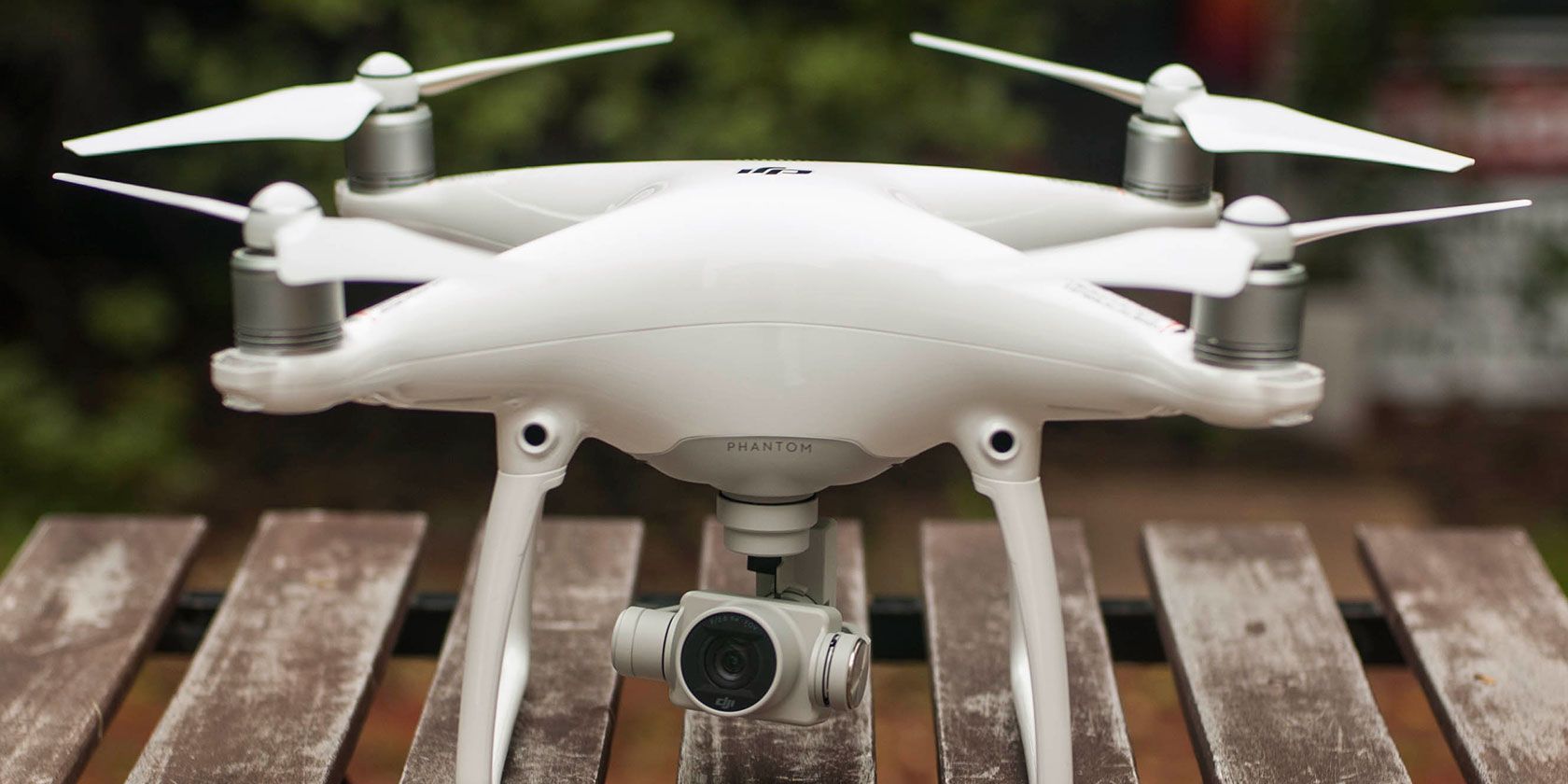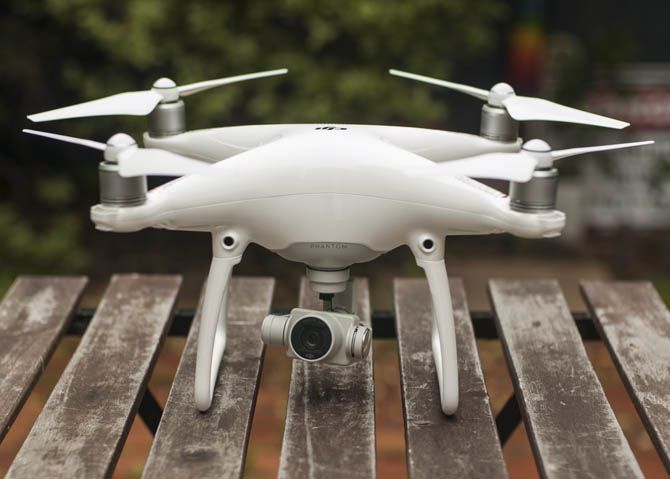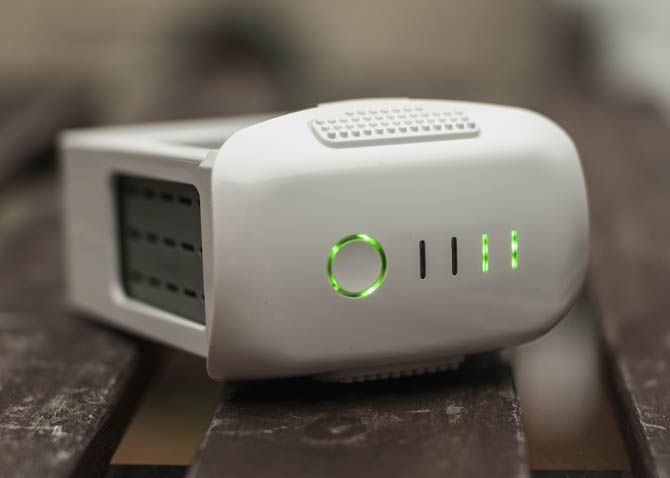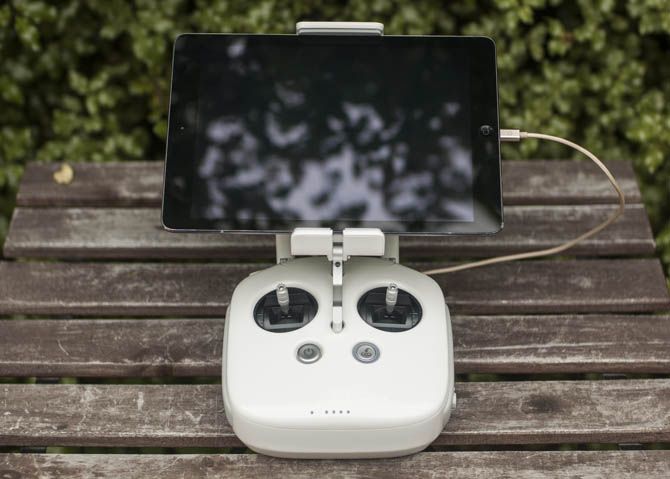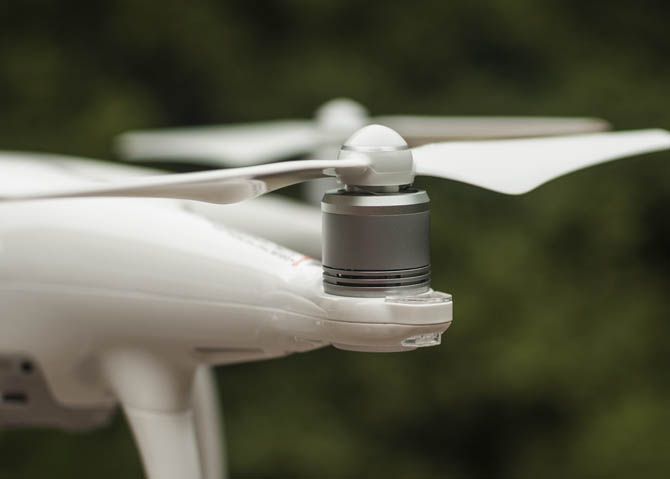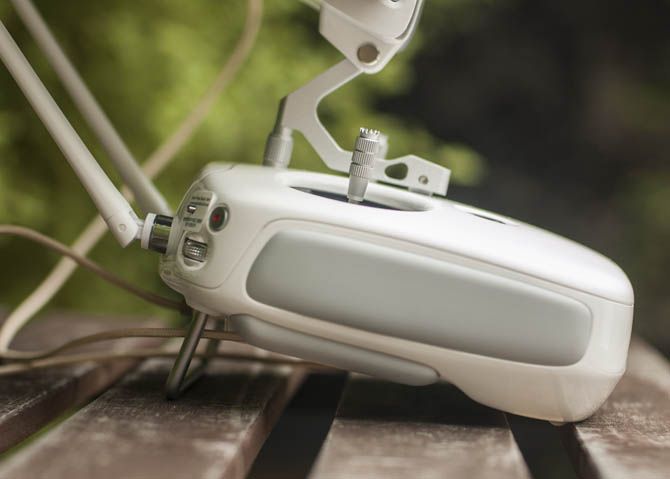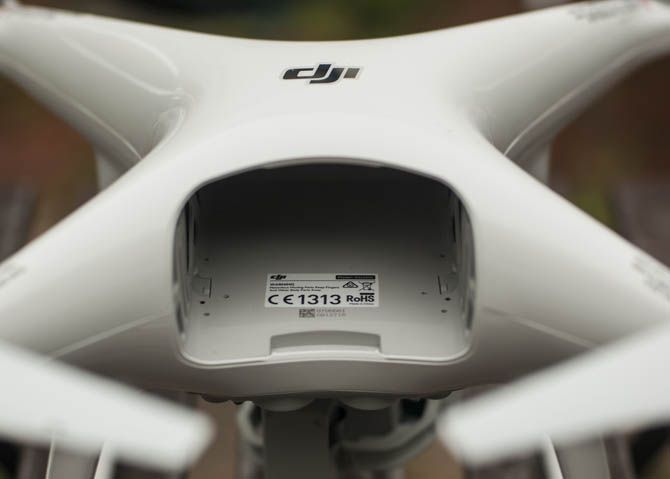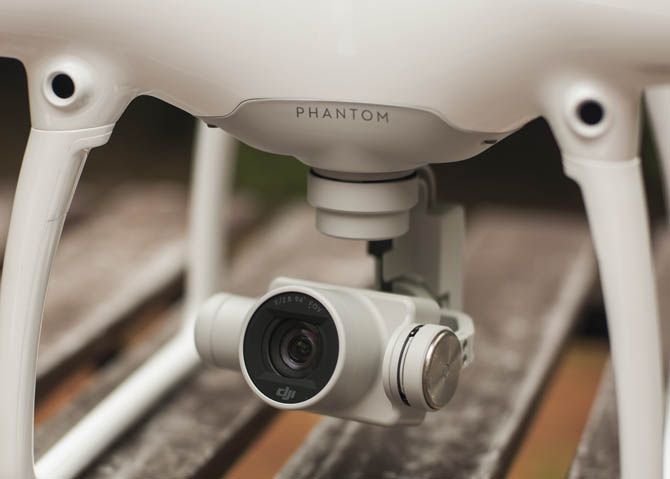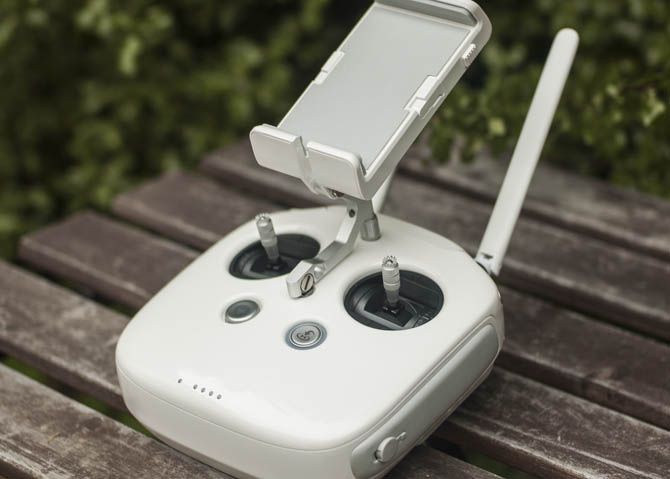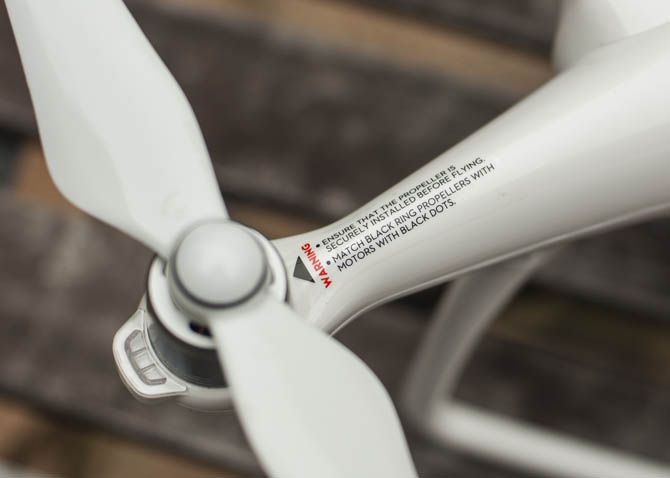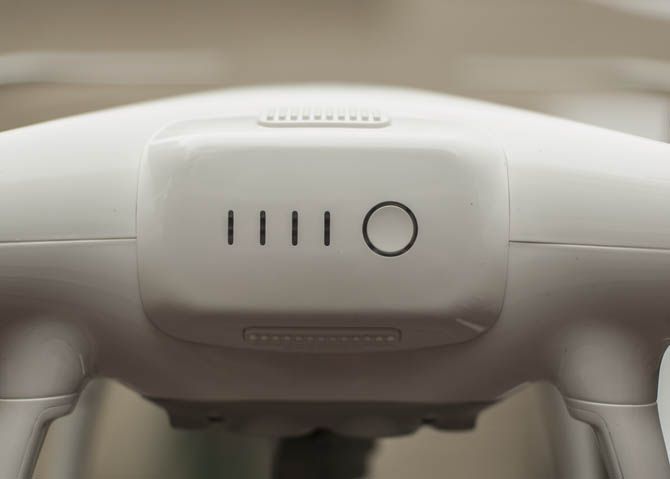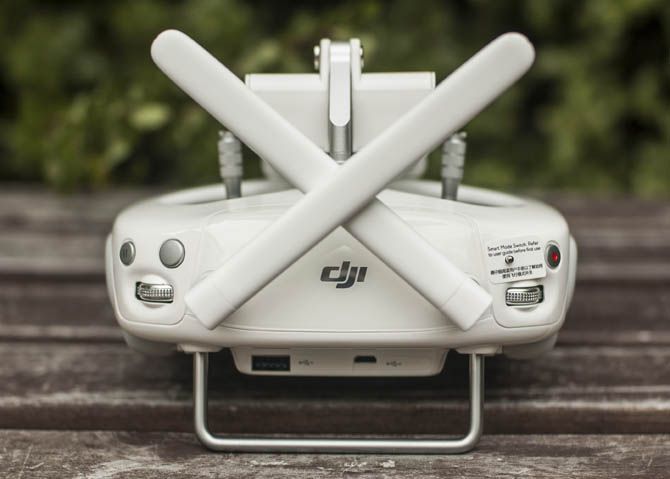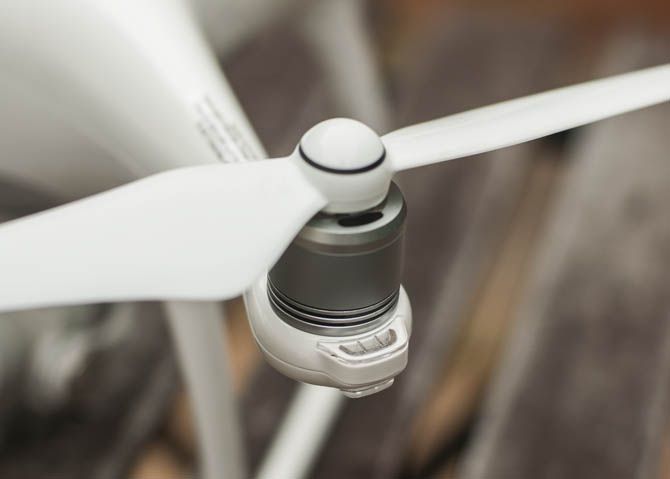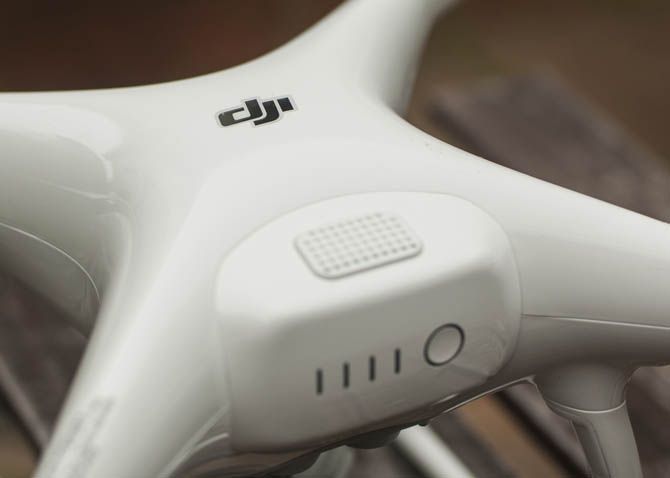If you're thinking about buying a drone, particularly one aimed at aerial photography, DJI's Phantom 4 will probably be on your radar. It's the first DJI drone to introduce smart features like obstacle avoidance and return-to-home, but it's not cheap, at just over $1000 for the basic kit.
Let's take a look at whether the Phantom 4 is worth the price of entry, whether it's right for you, and the drawbacks you should keep in mind if you're setting foot inside drone territory for the first time. Can't afford one? That's ok – we're giving our test model away to one lucky winner!
Life in Plastic
The first thing I noticed about the Phantom 4 is the massive, oversized carry case it comes in. It's made of a tough polystyrene type of material, it resembles a coolbox, and its quite big in comparison to the size of the drone.
Inside the box you'll find the drone itself, a remote control, a battery, a charger and some cables, two sets of rotors and some DJI literature for getting started. To fly the drone you'll need to bring your own smartphone or tablet, and a USB cable to connect it to the remote unit.
The drone itself is made of a sturdy white plastic which straddles the line between tough and lightweight. The propellors, gimbal and parts of the battery are metal but otherwise DJI have opted to keep the unit as light as possible. In fact the drone is incredibly lightweight until you fit the battery.
This takes the form of an "intelligent" battery — presumably because it tells you how much charge is left when you press the button. Each Phantom 4 battery carries a charge of 5350 mAh which feeds the drone at 15.2V. They're also pretty pricey, at $169 per cell if you want to buy spares.
The remote control is made of the same white plastic, with comfortable rubber grips and sharp control sticks that stick to your thumbs like glue. There's a mount on the front for your smartphone or tablet which can accomodate small iPhone 5-sized devices all the way up to a 9.7" iPad (no room for a larger iPad Pro though).
In addition to dual analogue flight controllers, you get two customizable "trigger" buttons, three shoulder buttons, a dial for controlling the camera tilt, a return to home button, and a power button. Just like the regular battery, you can tap the power button once to see how much charge your remote control currently has. It's all very comfortable to hold and use, even with a big iPad mounted in the middle.
The rotors must be removed to store the drone in the box, and though it takes a minute or so, putting everything together is very simple. The battery slides into the slot in the center of the drone, the propellers are color-coded, the remote mount is quickly adjustable, and there's no reliance on Wi-Fi or Bluetooth as the remote uses a USB connection to talk to your device.
The Phantom 4 works with iOS 8 and Android 4.1.2 devices or later. As some controls are only available through the smartphone app, you absolutely need to bring your own device in order to use the Phantom 4. Of course, there are many benefits to doing so...
A Very Smart Drone
Once everything is charged (including your smartphone or tablet, of course) you'll need to download the DJI GO app from the iTunes App Store or Google Play. Then, when the drone has been activated via the Internet, the app will guide you through the setup process and you'll be learning to fly within a matter of minutes.
You'll need to manually configure the compass within the drone by picking it up and turning it around in various directions. You'll also need to leave the drone to its own devices for around 5 minutes to configure the IMU before your first flight. When you see "Ready to fly" then you can hold the left and right control sticks down at the 4 o'clock and 8 o'clock positions respectively to take off.
The Phantom 4 makes excellent use of a beginner mode to stop you from trashing it before you know exactly what you're doing. It'll hold your hand for much of the process, and provide some quick tips about flying and landing the drone as you get acquainted. You won't be able to take off in beginner mode unless you have enough GPS satellites available to return you to home if things go wrong.
Other limitations include speed, altitude and distance. With beginner mode off, the drone becomes a lot more sensitive, much faster, and provides free reign to go as high and as far as you can. At this stage you'll be relying on the feed from the drone's camera to fly, particularly if you lose line-of-sight with the quadcopter.
The Phantom 4 includes a few notable improvements over past Phantom models, including the ability to automatically avoid obstacles. This should stop you from flying into walls, trees, rock faces, and whatever else you come across. Smart Return is another bold feature — promising to return the drone to wherever it took off from should it lose connection or run out of battery.
There are two other new and exciting features: ActiveTrack allows you to track moving targets automatically, TapFly lets you tap somewhere and fly there. These features demonstrate where DJI is taking such technology, arguably in a more user-friendly direction, while still allowing full manual control via the remote.
The Phantom 4 is essentially a flying camera, and it will likely appeal the most to aviators with a keen interest in aerial photography. You can take up to 4K video, with multiple ultra-HD settings, an option for 2.7K and even 120fps at 1080p. It also snaps 12 megapixel still images.
Under the right conditions, you'll get a range of 5 kilometers (about 3.1 miles) from the Phantom 4 at an altitude of 120 metres. This assumes little in the way of interference, and you'll need to make sure the antenna on your remote are facing the drone. Battery life is rated for 28 minutes, and I've found that to be accurate — with shorter flights using less battery than I expected.
Learn to Fly
Flying the Phantom 4 is, as expected, tons of fun. It's also easier than ever thanks to the new features DJI has added. Return to home and obstacle avoidance are excellent safeguards to have, particularly when starting out, learning to fly, and managing your power. It could be argued that DJI has made drones more accessible than ever before, but accessibility still remains one of my biggest concerns (which I'll get to shortly).
The controls default to a scheme known as "mode 2" — the left stick controls altitude and which way the drone points, the right stick controls speed and direction, in addition to being able to "strafe" left and right. It's just like using a game controller, especially when paired with a first person viewpoint of what the drone is seeing.
Lag between the video feed and input is minimal, and arguably doesn't impact the Phantom 4 in the slightest when used for the sweeping aerial shots DJI does so well. The remote control is intuitive and customizable, both the main control scheme and the customizable buttons on the back. It's not overwhelming and all the other features you need are compartmentalised within the DJI GO app.
The drone itself is pretty loud when sitting on the ground in front of you. It sounds not dissimilar to an electric lawnmower, and it'll kick up leaves and loose dirt when you take off. It's not a subtle machine, it'll likely scare off wildlife, and your neighbours will definitely hear it. After the initial setup, how quickly you affix the rotors will dictate how quickly you can get airborne. You can even take off without a GPS lock if you're not using beginner mode.
Video and stills are saved directly to a microSD card, and the Phantom 4 I reviewed came complete with a 16GB card which is good for around 30 minutes of 1080p video at 60 frames per second. Even though 28 minutes flight on a single charge isn't a long time, it's a marked improvement over so many of the cheaper hobby drones available. Until we see significant battery improvements, motor and other hardware efficiency will be key to improved flight times.
At $1,000 a pop, the first few flights with the Phantom 4 are a bit daunting, especially when it comes to going almost out of sight and to high altitudes. That's where the additional safety features come in, as well as beginner mode for those who don't quite trust themselves.
If the idea of flying a quadcopter from a first person viewpoint excites you, you're curious what your house looks like from above, or you want to get into aerial video and photography then the Phantom 4 will bring a smile to your face.
The Accessibility Problem
While the Phantom 4 is an accomplished bit of kit that's fun to fly and packed with smart features, there are three things you should consider before spending $1,000 (likely more) on such a sophisticated bit of kit.
The first is how restrictive your local area is for flying drones. Assuming you live in a city, you may have trouble legally flying the drone, unless you're prepared to travel to do so. Here in Melbourne (Australia), I can't fly if I'm too close to a helipad, airport, military base or other controlled airspaces.
This has definitely hindered by enjoyment of the drone, as I'm unable to lawfully fly it in my back yard. There are further restrictions on being a minimum distance away from other people, not flying over busy streets or beaches, and maintaining line of sight with the drone. You can get a license to lift some of these restrictions, but they're pricey and might not be worth it to the hobbyist.
You might not have this problem, especially if you live in the country. In this case you're at a major advantage, and won't face a hefty fine if you get caught.
The second problem is the size of the carry case, particularly if you don't intend to transport your drone by car. The drone itself isn't huge, but the carry case is massive. The case doesn't fit into any bag I own, including a huge camping backpack. This means that carrying it around is a real chore — especially if you're hiking or cycling.
DJI produce a backpack you can buy for a further $200 if you want to carry the drone with you on your back, which is more than the cost of a spare battery. I tried everything I could think of to get the drone around by bike, even covering the drone in bubblewrap and putting it "naked" into a large backpack. Eventually I resorted to buying a bike rack and strapping it on using bungee cords.
This is arguably the main reason both DJI and GoPro are targeting portability with their latest products. The Phantom 4 isn't great for those without cars, especially when you consider you'll need to carry your iPad, some spare batteries, food, water and any other supplies you might need.
The final drawback is cost. The drone is on the expensive end of the spectrum — not quite as much as some of the more "professional" heavyweight quadcopters, but substantially pricier than cheaper hobby drones. The previous two points stand here too — you may be limited in your usage depending on where you live, and you may have to buy a pricey extra backpack or bike rack just to transport it around.
It's not a cheap hobby, and you could well end up spending $2000 on your DJI habit once you take spare batteries, chargers, and transport into account. Don't make the mistake of thinking you can just buy the drone and that'll be good enough. The Phantom is all about getting out and about, exploring new places from new perspectives. At the very least you'll want a few $169 batteries to get a few hours flight out of each trip.
Drone On
The DJI Phantom 4 is a beast. It's fun to fly, loaded with smart tech that provides ample peace of mind, and it captures stunning video that's worthy of professional productions. It can fly home if you venture too far, land safely if you run out of batteries, and even guide you through the process of becoming a competent pilot.
28 minutes on a single battery is pretty good, but you'll be left wanting more than that once you really get into it. A Phantom 4 hobby can be very expensive, potentially limiting, and too big and cumbersome to make the most of without a car or further expense.
There's a good reason the latest drones focus on portability above all else, so keep that in mind when planning a purchase or opt for a smaller model instead.
[recommend]If you want a drone that's easy to use with great video and still performance, look no further. But if you don’t have $2000 to sink into the hobby and make it worth your while, think again.[/recommend]

